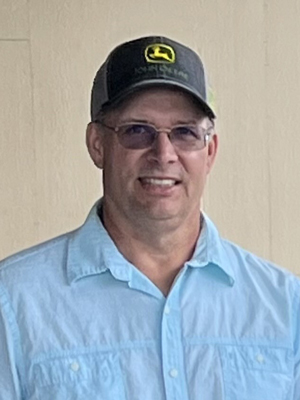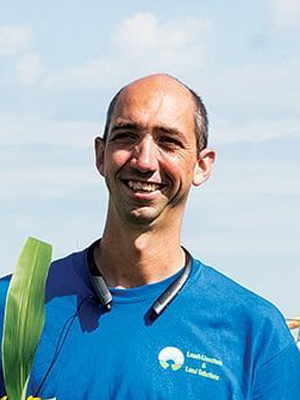Cover Crop Coaches
Meet Our Cover Crop Coaches
Soil health and the biological interactions that cause crops to flourish – or not – is complex and often fraught with contradictions. Add cover crops into the mix and it gets even more confusing. How great would it be to know a farmer who has been growing cover crops for years and is willing to answer questions and offer real-life insights into how cover crops impact other farm management decisions?
Well now you can.
Thanks to a generous grant from General Mills, cover crop coaches are now available through the Cover Crop Coach program from Conservation Technology Information Center (CTIC) to help farmers navigate the complexities of cover crop selection, planting, and management, tailoring solutions to each farmer’s specific needs and circumstances.
This new program aims to further support farmers across Minnesota, Wisconsin, and South Dakota as part of the Farmers for Soil Health program, an incentive program that provides farmers with financial and technical assistance in adopting cover crops.
General Mills' generous contribution will enable CTIC to expand its reach, providing on-the-ground support and guidance to farmers interested in adopting cover cropping practices.

Read on to meet our coaches!
Minnesota

Ryan Lee
Ryan Lee grows corn and soybeans near Fairfax, MN, in the southcentral part of the state. Ryan farms with his brother and the pair began introducing cover crops into their farming operation in 2016 by interseeding corn at V6 and aerial seeding into soybeans in mid-August. They also seed cereal rye following corn harvest so they can plant soybeans green the following spring.
Ryan says while they are conservation minded, new practices need to make sense economically also, and they have not seen a yield drag as a result of integrating cover crops. Three years ago, the Lee brothers switched to strip-till and are enjoying the savings in time and fuel from that new practice. They also enrolled in a carbon credit program and are learning how it can enhance conservation efforts on various types of operations. Ryan has a seed business where he sells Pioneer and Byron Seed products, and he is active in his church and local ag groups.
Myron Sylling
Myron Sylling farms nearly 1600 acres in SE Minnesota with his brother, Mikal. The farm, which the Sylling family has been operating for 132 years, was recognized as a Century Farm at the Houston County Fair in 2023.
Having started no-tilling in the early 1990s, the brothers started integrating cover crops into their operation in 2013, and have aerial seeded, drilled, and frost-seeded cover crops, all post-harvest, except for the aerial seeding attempt. “We set up or modify our equipment ourselves to achieve the performance we want for our situation,” Myron said. Myron is a mentor with the Minnesota Soil Health Coalition and is on the Steering Committee for the Fields of Sinsinawa, a new farmer-led learning center that has been established in memory of Dave Brandt. Myron also sells Agri Gold seed as well as BW Fusion biological and fertility products.


Brady Wulf
After graduating from South Dakota State with a degree in Ag Science, Brady Wulf worked as an agronomist for a large farming operation for two and a half years before returning to his family farm in Starbuck, MN. Going by the name of Clear Springs Cattle Company, the operation includes 450 acres of cropland as well as Simmental and SimAngus cattle.
Brady says his father began growing cover crops more than 30 years ago by seeding wheat or oats for grazing after wheat harvest. Over the years, they have added more species and now seed a diverse 12+ species mix each year after harvest. They also began no-tilling in 2015 after Brady did an internship at Jorgenson Land & Cattle in Ideal, SD. The family has been extensively involved with the Minnesota Cattlemen’s Association and hosted a summer tour in 2017 that attracted about 800 attendees.
South Dakota

Kody Aesoph
Kody Aesoph farms and ranches with his in-laws ten miles south of Ree Heights, SD, on a 100% no-till operation that has been integrating cover crops since 2018 on an average of 500 acres per year. While he grew up on a more conventional operation, he started learning about soil health and cover crops several years ago after realizing healthy soil was the key to fostering resilience in farming operations.
A major part of the operation is cattle, so cover crops are used as feed (hay, silage), and grazed multiple times throughout a growing season. By integrating cattle into the operation, Aesoph says they are improving nutrient cycling, which is a major part of rejuvenating the land. “Our farm has seen major improvements in water infiltration and organic matter over the past three years,” he says. “Our goal is to cycle as much of our own nutrients as possible so when we do plant a row crops, the yields will improve, we can reduce fertility costs, and have a valid fight against chemical resistant weeds.”
Chet & Charlie Edinger
Brothers Chet & Charlie Edinger farm together in Mt. Vernon, SD, growing wheat, corn, soybeans, and sunflowers. Before joining together in a formal partnership in 1998, Chet spent several years working in the banking industry while Charlie worked as an agronomist. Charlie is also on the Board of Directors for Dakota Lakes Research Farm. Together, Chet and Charlie are able to advise on a wide range of cover crop topics from rotations to nutrient management and chemical interactions to economics.
While the pair started experimenting with cover crops in the early 2000s, their “go-to” cover crop is a five-species brassica mix that they seed into wheat stubble in early August. They are also strong proponents of controlled traffic and spent twenty years putting their system together so all their equipment – including planters, air seeders, and sprayers, are all 60-feet wide and set to 20-inch rows. Chet says one of the biggest challenges for planting cover crops in South Dakota is getting something in after corn. “Management style matters,” he says. “If a farmer isn’t paying attention, he’ll miss the right window for planting covers.”


Alex Frasier
Alex Frasier farms with his dad, Jayme, in Faulkton, SD. He currently works as an agronomist at Independent Ag and is passionate about cover crops, poly cropping and soil health.
Four years ago, he implemented a poly cropping system where he plants rye, oats, and flax as a companion crop between his soybean rows, letting them provide biological diversity for several weeks before terminating them. Not only have the Frasier’s soybean yields increased significantly each year as a result, but these companion crops have also allowed them to reduce chemical and fertilizer inputs. “I want to bring people with me along this road and show growers you can save money, make positive changes for the soil, and increase production,” Alex says. “All you need for this system to work is an open mind and an air seeder.”
Wisconsin

Joe Ailts
A Wisconsin Certified Crop Advisor and owner/operator of Ailts Agronomy, Joe Ailts is an independent crop scout/agronomist with a deep interest in regenerative agriculture. With a bachelor’s degree in biotechnology, a master’s degree in human clinical nutrition, and a professional graduate certificate in crops and soils, Joe chooses to spend most of his time coordinating, deploying, and analyzing on-farm research, notably in the soil health arena.
Joe is an advocate for designing rotations that allow for the establishment of targeted and purposeful cover crops following small grain/silage/snap bean harvest, and he is actively researching hairy vetch and rye combinations as a means to maximize biological nitrogen creation prior to corn. During his personal time, Joe is a hobby farmer, operating a regenerative sweet corn and pumpkin farm, where he has increased his soil organic matter from 2.5% to 4.5% over the last 15 years by using intensive cover cropping and other soil health principles.
Jeff Gaska
Jeff Gaska grows corn, soybeans, wheat, and hay on a 450-acre farm in south central Wisconsin, which also includes a 35-head cow/calf operation featuring rotational grazing. He has been using no-till practices for the last 30 years and started frost seeding clover into winter wheat 20 years ago. Since then, he has experimented with several other cover cropping techniques and four years ago, he started planting corn and soybeans “green.”
Jeff raises his Simmental cattle on rotational grass pastures during the spring, summer, and early fall and then moves them to harvested wheat fields that were planted to multi-species cover crop mixes. After covers, he turns the cattle out onto interseeded 30- and 60-inch row corn fields as late into winter as conditions permit. Jeff is extensively involved in local farmer-led groups, including the Dodge County Farmers for Healthy Soil/Healthy Water.


Adam Lasch
Adam Lasch and his wife, Betsy, own and operate a diverse livestock and crop farm in southeastern Wisconsin, near Lake Geneva. While the primary enterprise is dairy, they also maintain a beef cow herd, raise their own replacements, and finish cattle. All of their 250 acres of primarily rented land is used to produce forage and feed for their livestock. The operation is 100% no-till and they integrate cover crops on as many acres as time and weather permit. They are able to be extremely flexible in their rotation because they can utilize their diverse covers and forages with their various classes of livestock.
Adam is a member of a local farmer-led group, the Racine County Watershed Protection Committee, and sits on the advisory board for One Good Idea, a clearinghouse for learning materials on farming practices that help improve soil and land while boosting the bottom line. He is excited about being able to offer support to other farmers who are just getting started on their conservation journey. “If I can help one young farmer be successful, by avoiding some of the mistakes that I made while I was learning, it will be a win in my book,” he says.

